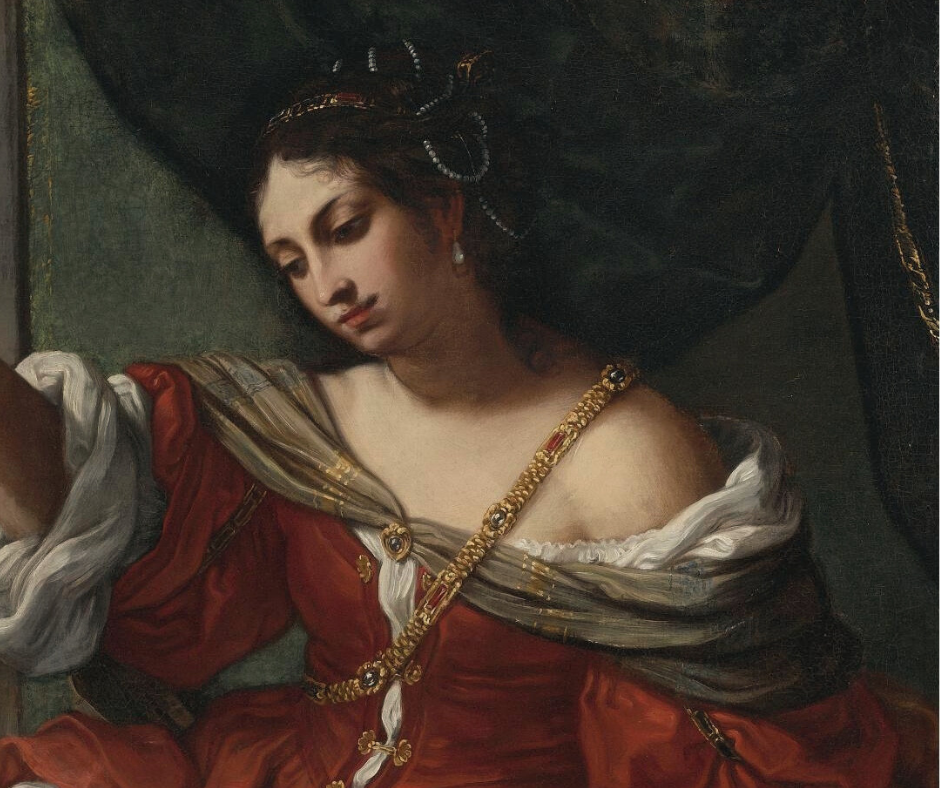

The Enduring Influence of Baroque Painter Elisabetta Sirani
Summary
Reflection Questions
Journal Prompt
In spite of many cultural and societal challenges, Elisabetta Sirani was a prominent figure in the Baroque art movement. Mentoring many notable names in Italian art, Sirani quickly emerged as one of the most influential female artists of the 17th century. Born in 1638 in Bologna, Italy into an artistic family, Sirani quickly distinguished herself in a male-dominated profession. Her work, characterized by vibrant expressions and a mastery of light and shadow, reflects the quintessential elements of Baroque style. Sirani not only broke gender barriers in her time by achieving widespread recognition but also played a crucial role in mentoring and supporting other female artists through the studio she established. Through her own paintings and her mentorship, Sirani contributed significantly to the diversification of the art world during an era when women’s participation in the arts was severely limited. Learn more about Elisabetta Sirani paintings and her life below.
Elisabetta Sirani’s Early Life and Training


Elisabetta Sirani was born in 1638 in Bologna, Italy, into a family deeply rooted in the arts. Her father, Giovanni Andrea Sirani, was a well-established painter and an enormous influence on Elisabetta. Growing up in this artistic environment played a pivotal role in shaping Elisabetta’s early exposure to and interest in art, setting the foundation for her future career as an artist.
Elisabetta’s Artistic Training Under Father Giovanni
Giovanni Andrea Sirani, born in Bologna in 1610, was a significant figure in the Italian Baroque art movement, renowned for his work within the Bolognese school. Trained under the acclaimed painter Guido Reni, Sirani absorbed the quintessential elements of the Baroque style, characterized by its dramatic expression, movement, and masterful use of light and shadow.
His artistic repertoire primarily consisted of religious subjects, portraits, and mythological scenes, marked by dynamic compositions and vibrant colors. His style, deeply influenced by Reni, exhibited an emotional intensity and a sophisticated handling of light, distinguishing his works in the period’s art scene.
In addition to his artistic contributions, Giovanni Andrea Sirani was a respected teacher and mentor, particularly known for his role in shaping the skills of his daughter, Elisabetta Sirani, who became one of the most acclaimed artists of her era. He taught several students in his workshop, imparting techniques and principles that were pivotal in the Bolognese school of art.
Under his guidance, Elisabetta developed a technique that, while influenced by her father’s and Reni’s styles, was distinctively her own. Giovanni Andrea Sirani’s legacy extends beyond his paintings; his influence as a mentor ensured the perpetuation and evolution of the Baroque style in Italy, particularly through the talents of his daughter, who emerged as a central figure in the art history of the period.
Influence of Guido Reni on Elisabetta Sirani’s Style
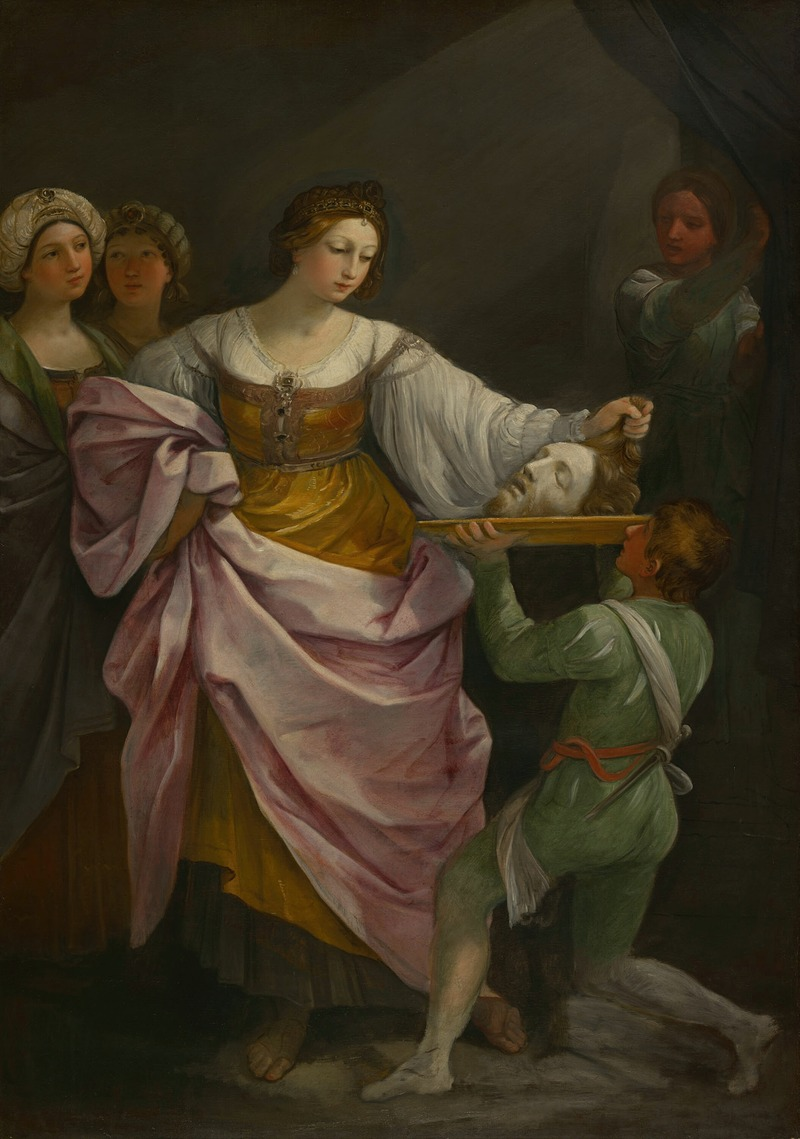

Guido Reni, a prominent Baroque painter, significantly influenced Elisabetta Sirani’s artistic style through her father’s teachings. Reni was renowned for his use of soft, diffused light and a palette dominated by cool tones, which added a distinctive grace and emotional depth to his compositions. These elements became evident in Sirani’s work.
She adopted Reni’s approach to chiaroscuro, the dramatic contrast between light and dark, to create a strong visual impact. Additionally, Reni’s penchant for idealized, almost ethereal figures is mirrored in Sirani’s representations, especially in her religious and mythological subjects. This stylistic adoption from Reni allowed Sirani to blend the traditional Baroque dynamism with a unique delicacy, making her works distinct yet reflective of her artistic lineage.
Elisabetta Sirani’s Early Training Under Giovanni Andrea Sirani
Elisabetta Sirani’s early training under her father was comprehensive and rigorous, laying a solid foundation for her artistic career. Giovanni Andrea Sirani, recognizing his daughter’s talent early on, provided her with formal training in drawing, painting, and the principles of the Bolognese school of art. This training included mastering anatomy, which was crucial for realistic figure painting, a staple of Baroque art.
Elisabetta also learned the art of composition, color theory, and the handling of different mediums, including oil and fresco. Her father’s emphasis on precision and detail in drawing was particularly influential, as seen in the refined lines and careful structuring of her later works. This combination of technical skill and artistic sensibility, nurtured from a young age, enabled Elisabetta Sirani to develop a distinct voice in the Baroque tradition, influenced by but not entirely reliant on her father’s and Reni’s styles.
Elisabetta Sirani’s Early Artistic Career and Rapid Rise to Fame
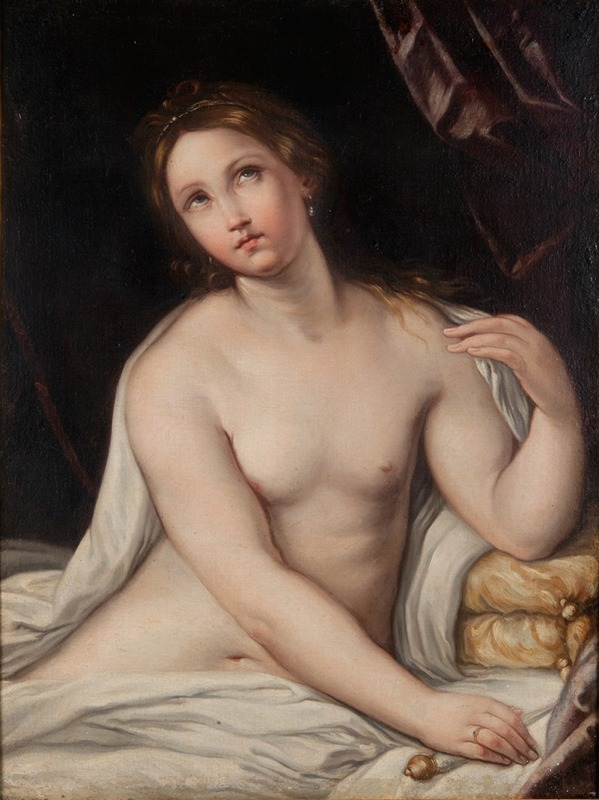

Elisabetta Sirani’s artistic career was marked by a swift ascent to recognition within the Baroque art community. She began her professional journey at an early age, under the tutelage of her father, Giovanni Andrea Sirani. By the age of 19, she had already established herself as a professional artist in Bologna, a notable achievement in a period dominated by male artists.
Her ability to quickly produce high-quality work, combined with her unique style, garnered attention and acclaim from patrons and fellow artists alike. This rapid rise in fame was unusual for a female artist of her time and demonstrated her exceptional talent and dedication to her craft.
Description of Artistic Style and Techniques
Elisabetta Sirani’s artistic style was deeply rooted in the Baroque tradition, characterized by dynamic compositions, vivid expressions, and a dramatic interplay of light and shadow. She skillfully employed chiaroscuro, a technique that uses strong contrasts between light and dark to achieve a sense of volume in modeling three-dimensional objects and figures.
Her paintings often exhibited a sense of movement and emotional intensity, hallmarks of the Baroque aesthetic. Additionally, Sirani was known for her swift brushwork and the ability to convey texture and detail, which added a lively quality to her paintings.
Discussion of Most Notable Works and Themes
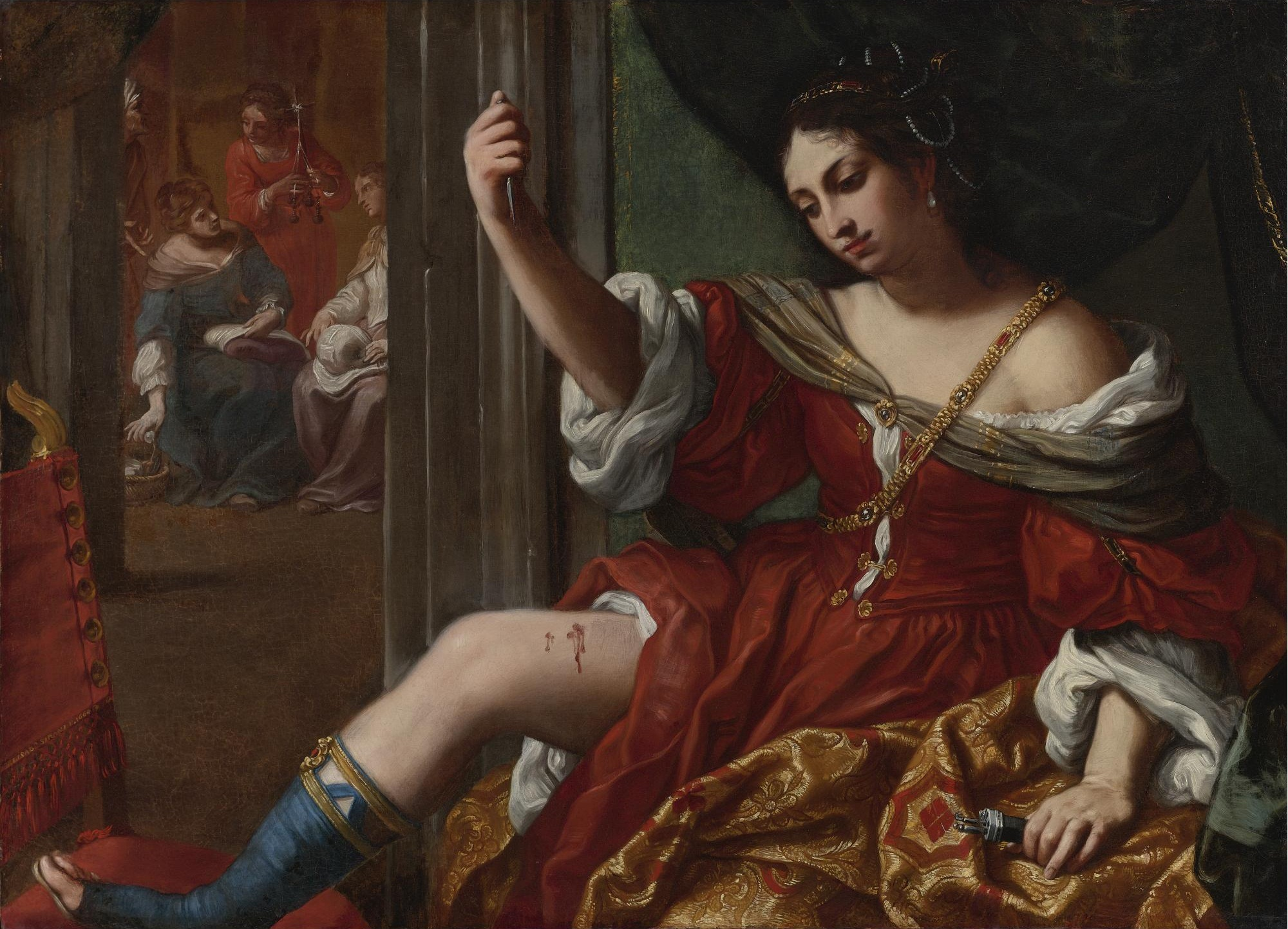

Several of Sirani’s works stand out for their artistic merit and thematic depth. Among her most notable works are “Portia Wounding Her Thigh” (pictured above), which exemplifies her ability to capture emotional intensity and physical pain, and “The Holy Family,” a testament to her skill in depicting tender and intimate religious scenes. Her thematic range was broad, encompassing biblical and mythological subjects, portraits, and allegories. Sirani’s works often featured strong female characters, reflecting both her personal interests and the broader cultural movements of her time.
Her Role in the Baroque Art Movement
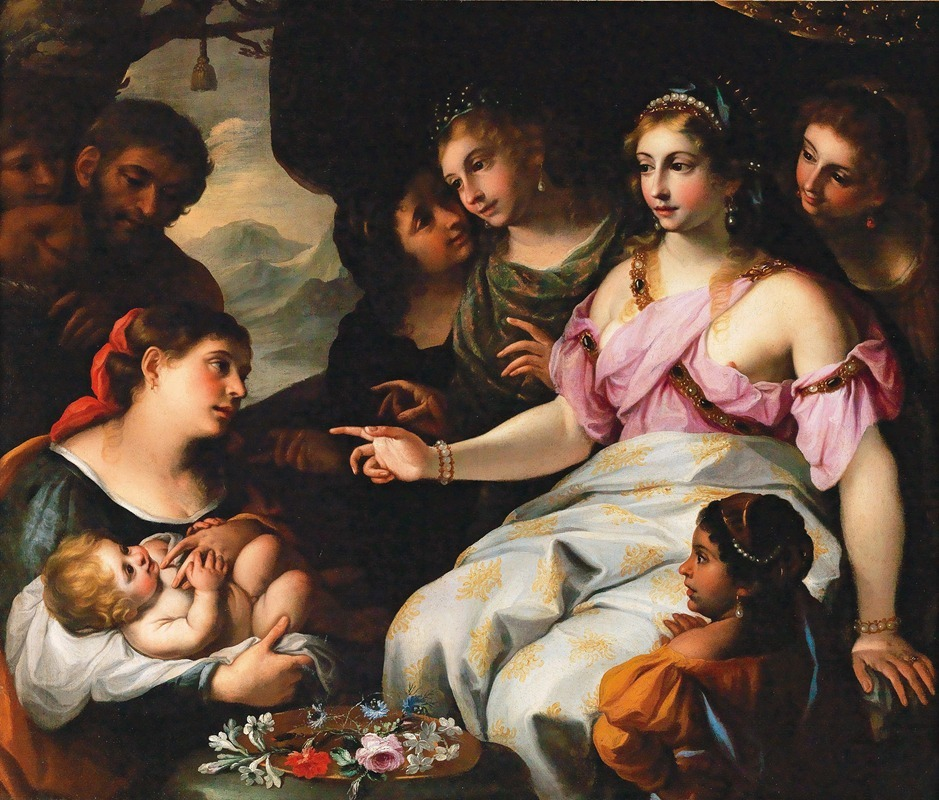

In the context of the Baroque art movement, Elisabetta Sirani played a significant role, not just as a prolific artist but also as an innovator within the tradition. Her work bridged the classic elements of Baroque style with her own personal flair, adding a unique female perspective to a predominantly male-dominated art world. Her success and recognition as a female artist in the 17th century were groundbreaking and helped pave the way for future generations of women in the arts.
Her contributions to the Baroque movement are seen not only in her artworks but also in her role as a mentor and educator to other female artists, marking her as a key figure in the evolution of the artistic landscape of her time.
Advocacy for Female Artists


Elisabetta Sirani was a pioneering figure in the promotion of female artists during a time when women’s participation in the arts was significantly restricted. In a bold move that defied societal norms, she opened her studio in Bologna to female students.
This initiative was not just a statement of her feminist beliefs but also a practical step toward providing women with professional artistic training, which was largely inaccessible to them at the time. Her studio became a haven for aspiring female artists, offering them the opportunity to learn, create, and collaborate in an environment that was free from the gender biases prevalent in the art world of the 17th century.
Her Contribution to Empowering Women in the Art World
Sirani’s contribution to empowering women in the art world extended far beyond her studio’s walls. By succeeding as a professional artist and teacher, she challenged the deeply entrenched gender stereotypes and barriers that women faced in the arts. Her success and visibility in a male-dominated field provided a powerful example and inspired other women to pursue artistic careers.
Furthermore, her advocacy for women in art went hand-in-hand with her artistic achievements, making her a role model and a symbol of possibility for women in an era when their artistic ambitions were often dismissed or discouraged.
Notable Female Artists Mentored by Sirani
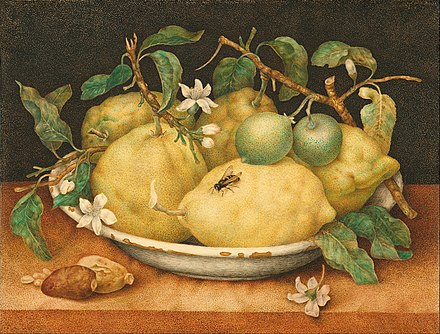

Among the female artists mentored by Elisabetta Sirani, several achieved recognition in their own right, testament to her skill and dedication as a teacher. One notable student was Caterina Tarabotti, who also gained acclaim for her work. These artists, among others, benefited from Sirani’s guidance, not only in developing their technical skills but also in navigating the challenges of being women in the art world. Sirani’s mentorship helped to cultivate a generation of female artists who continued to break barriers and contribute to the art world, each in their unique way.
Her Challenges and Triumphs as a Female Artist in 17th Century Italy
As a female artist in the 17th century, Elisabetta Sirani faced significant societal and cultural challenges. The art world was predominantly male-dominated, and women were often denied access to the same level of training, patronage, and opportunities as their male counterparts.
Additionally, societal norms of the time placed restrictive expectations on women, limiting their public and professional roles. Sirani had to navigate these barriers to establish herself as a professional artist. Her success required not only exceptional artistic talent but also the fortitude to overcome the skepticism and prejudices prevalent in a society unaccustomed to women in roles of artistic authority and prominence.
Her Triumphs and Recognitions
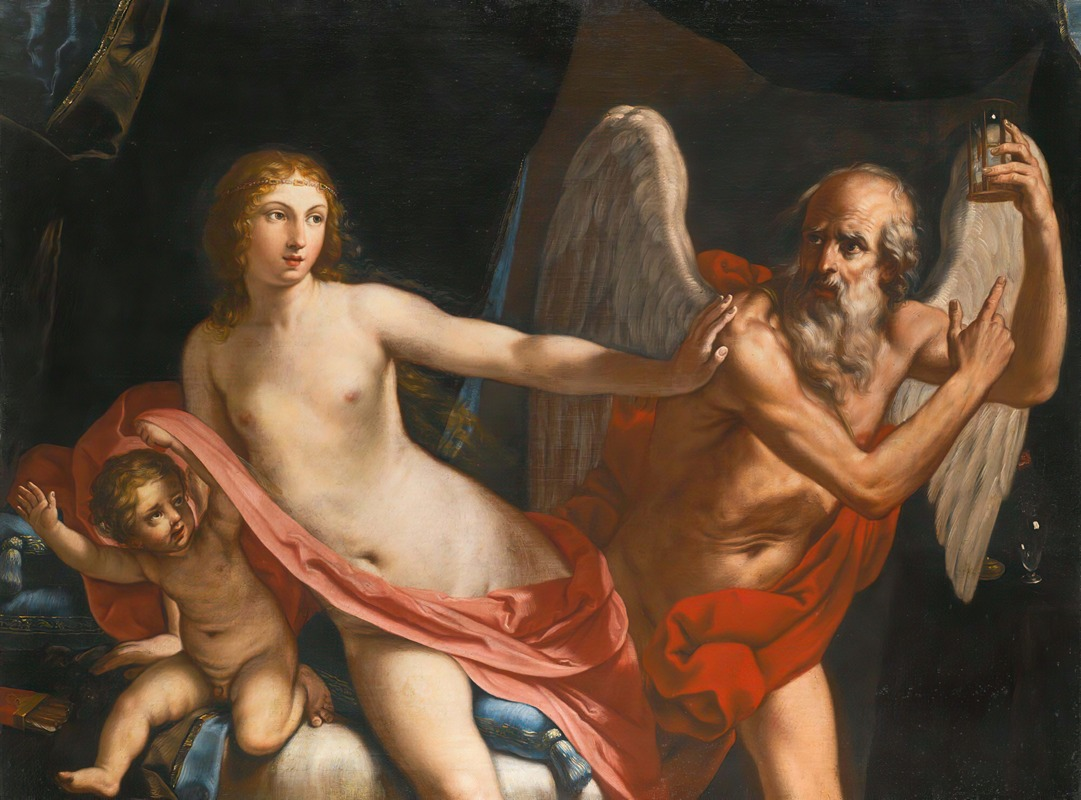

Despite these challenges, Elisabetta Sirani achieved remarkable triumphs and recognitions in her career. She became one of the first women to work professionally as an artist in Bologna, a significant feat considering the era’s gender biases. Her artworks were sought after by patrons, both locally and from other parts of Italy, attesting to her skill and popularity.
Sirani’s work was acclaimed for its technical proficiency, emotional depth, and innovative approach to traditional subjects. Moreover, her role as a teacher and mentor to other women artists was itself a significant triumph, paving the way for future generations of female artists. Sirani’s legacy as a trailblazer in the art world was further cemented by the enduring influence and relevance of her work, which continues to be celebrated and studied for its contributions to the Baroque era.
Elisabetta Sirani’s Mysterious Death and Lasting Legacy
Elisabetta Sirani’s life was tragically cut short when she passed away in 1665, at the young age of 27. Her death was sudden and unexpected, occurring at a time when she was at the height of her artistic career. The abrupt nature of her demise left the art community in shock and prompted immediate speculation and inquiry into the cause of her death.
The suddenness of Sirani’s death led to various theories and speculations. Initially, there were suspicions of foul play, with some contemporaries believing she had been poisoned. However, later historical analyses suggest that her death might have been due to natural causes, possibly a peptic ulcer or peritonitis. The lack of concrete evidence and definitive medical diagnosis at the time has left the exact cause of her death a subject of historical conjecture.
Impact of Her Death on the Art Community
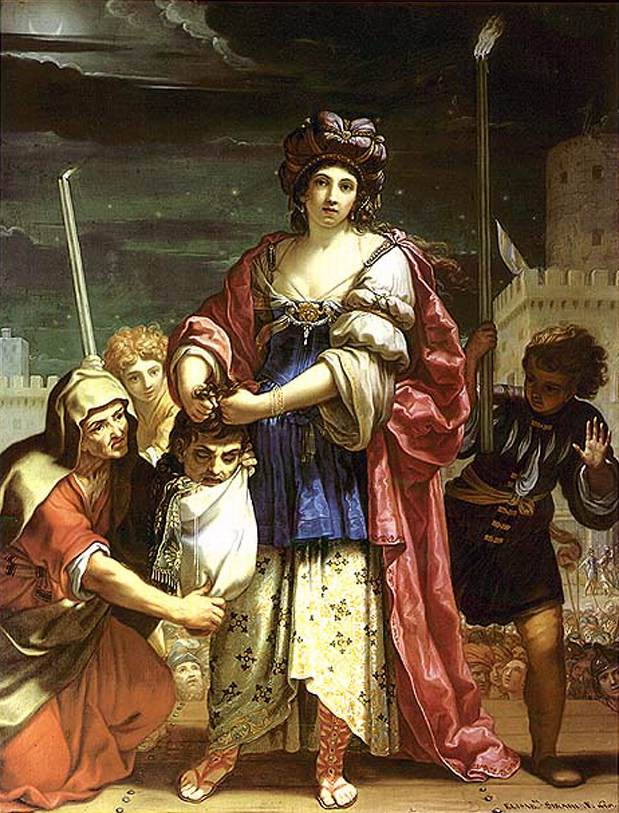

Elisabetta Sirani’s death had a profound impact on the art community. It was widely mourned in Bologna and beyond, with contemporaries recognizing the loss of a highly talented and innovative artist. Her funeral was a significant event, attended by a large number of people, and her passing was noted in various contemporary accounts. The loss of such a promising and influential artist at a young age was felt deeply in the artistic circles of the time.
Her Lasting Legacy and Influence on Future Generations of Artists
Elisabetta Sirani’s legacy extends far beyond her untimely death. She is remembered as a pioneer among female artists, breaking barriers in a male-dominated field and setting a precedent for women in the arts. Her works continue to be admired for their technical skill, emotional expression, and unique style.
Sirani’s role as a teacher and mentor to other female artists also contributed significantly to her legacy, as she helped to nurture and develop the talents of the next generation of women in art. Her life and career remain a source of inspiration and study, symbolizing the potential and achievements of women in the arts during a time when they faced considerable obstacles.
Final Thoughts


Elisabetta Sirani’s contributions to Baroque art and her role as a trailblazer for female artists are both significant and enduring. Her mastery of Baroque techniques, coupled with her unique artistic voice, established her as a notable figure in a predominantly male-dominated art world of the 17th century. Sirani not only broke gender barriers by achieving professional acclaim but also actively fostered the growth of other female artists, challenging the restrictive norms of her time.
The story of her life, marked by both remarkable achievements and untimely tragedy, continues to resonate in contemporary times. Elisabetta Sirani stands as a symbol of resilience and talent, inspiring future generations of artists, particularly women, to pursue their creative passions despite societal challenges. Her legacy is a testament to the enduring impact one individual can have in altering the course of art history and paving the way for greater inclusivity and diversity in the art world.








